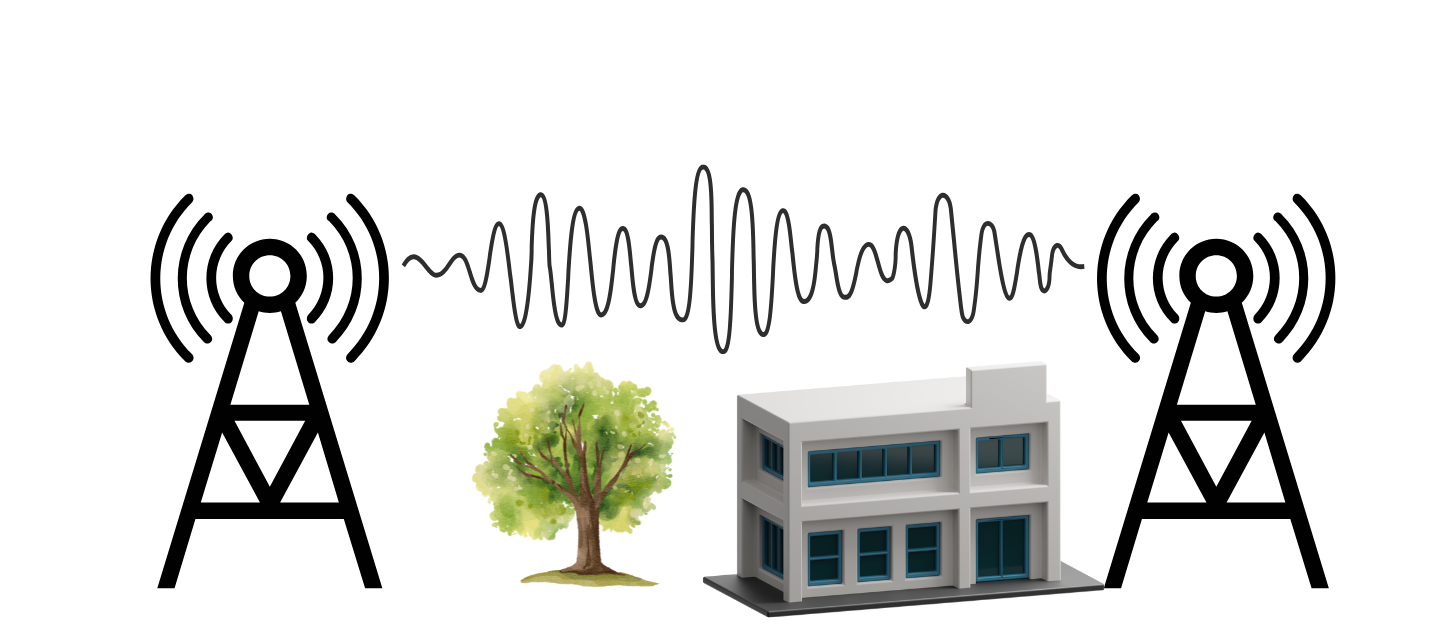Line of sight propagation is a fundamental concept in radio communication that governs how signals travel directly from the transmitter to the receiver without obstruction. This mode of transmission is critical for high-frequency systems, such as VHF and UHF communication, satellite links, and microwave networks.
Because these signals move in straight paths, any obstruction between antennas can reduce or completely block the signal. However, by understanding how line of sight propagation behaves and what affects it, operators can optimize range and clarity effectively.
How Line of Sight Works
Line of sight signals travel in direct, unobstructed paths through the atmosphere. When an antenna transmits, radio waves expand outward, forming a coverage area limited by terrain, buildings, and the curvature of the Earth.
Typically, VHF and UHF frequencies rely heavily on line of sight, meaning even minor obstacles like trees or walls can impact reception. However, when antennas are elevated, the distance between them increases, extending communication range and improving overall reliability.
Factors Affecting Signal Degradation
Signal degradation is a natural part of line of sight propagation. As radio waves travel, they lose energy due to spreading loss, atmospheric absorption, and interference. In urban environments, signal degradation is often more severe because reflections and absorption from concrete and metal structures weaken the signal.
Additionally, environmental conditions like humidity, rain, or fog can absorb higher-frequency waves, slightly reducing range. In contrast, open areas such as rural landscapes or over water surfaces provide minimal interference, leading to stronger signals and better communication distance.
The Role of Reflections and Multipath Effects
Although line of sight signals primarily travel straight, reflections from nearby objects can cause multipath propagation. This phenomenon occurs when a signal reflects off surfaces such as buildings, vehicles, or the ground, reaching the receiver at different times.
These delayed signals interfere with the direct path, resulting in distortion, phase shifting, or fading. In some cases, reflections can enhance coverage in areas with partial obstruction, but more often they cause unwanted interference.
To mitigate this issue, operators use directional antennas or filtering techniques to focus reception on the primary signal.
Absorption and Atmospheric Effects
Absorption occurs when the radio signal passes through materials that convert electromagnetic energy into heat, reducing strength. Materials like concrete, water, and dense vegetation absorb significant amounts of radio energy. Furthermore, the atmosphere itself can attenuate radio waves, especially at higher frequencies.
Temperature inversions or atmospheric layers can also bend signals, occasionally extending or reducing line of sight range unexpectedly. Therefore, understanding local environmental conditions is essential when planning reliable communication links.
Determining the Effective Range
The range of line of sight propagation depends on antenna height, frequency, and terrain. Generally, the higher the antennas, the greater the range. The radio horizon formula estimates the maximum distance by considering Earth’s curvature.
For example, two antennas positioned 30 feet above the ground can communicate up to approximately 10 miles apart under ideal conditions. However, this distance decreases with lower antennas or uneven terrain. Using taller masts or mounting antennas on rooftops often extends line of sight and minimizes loss.
Overcoming Line of Sight Limitations
Although line of sight is limited by obstacles and curvature, several methods can extend its range. Using high-gain directional antennas helps focus the energy toward the receiver, reducing signal loss. Additionally, employing repeaters strategically placed on elevated terrain can bridge gaps in coverage.
Satellite systems completely overcome terrain limitations by providing true line of sight through space-based relays. Properly tuning antenna height and angle also plays a key role in minimizing interference and improving signal clarity.
Practical Considerations for Operators
Operators working with line of sight propagation must account for surrounding topography, building density, and atmospheric conditions. For fixed installations, conducting a site survey helps identify potential obstructions and optimize antenna placement.
Portable setups, such as handheld radios or field stations benefit from elevation, moving to higher ground significantly improves reception. Moreover, maintaining proper antenna alignment ensures the strongest possible link, especially when operating at higher frequencies.
Line of Sight Propagation
Line of sight propagation remains a cornerstone of modern communication, offering predictable and efficient performance when managed correctly. While signal degradation, reflections, and absorption can impact quality, understanding these factors allows operators to adjust for optimal transmission.
By combining proper antenna design, strategic placement, and awareness of environmental influences, line of sight communication can achieve impressive reliability and range in both professional and amateur applications.
Please consider Donating to help support this channel
